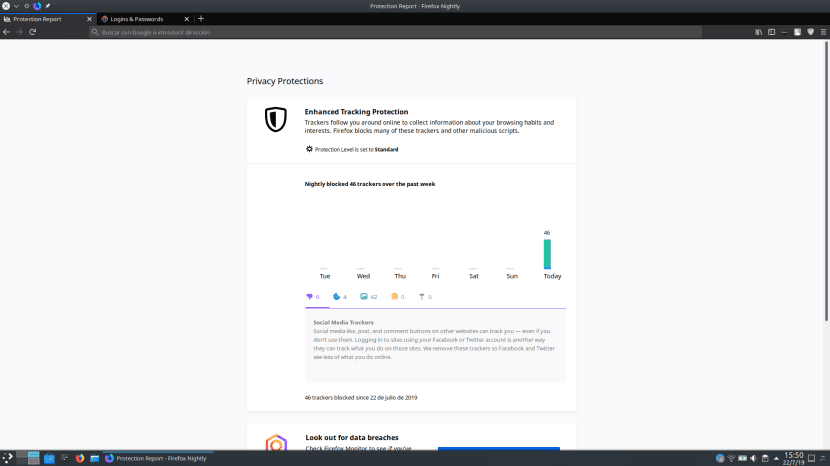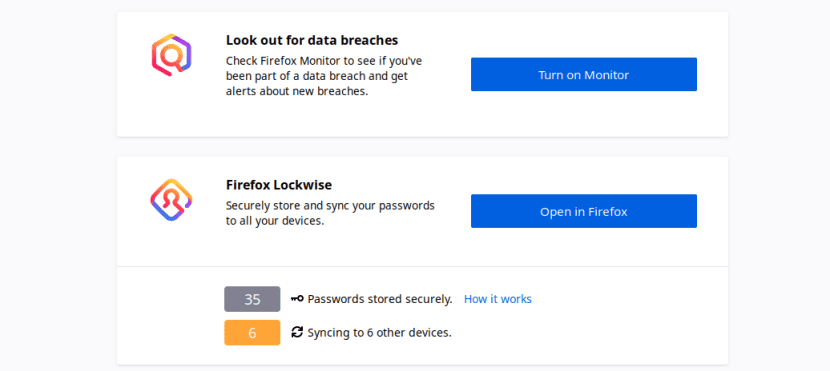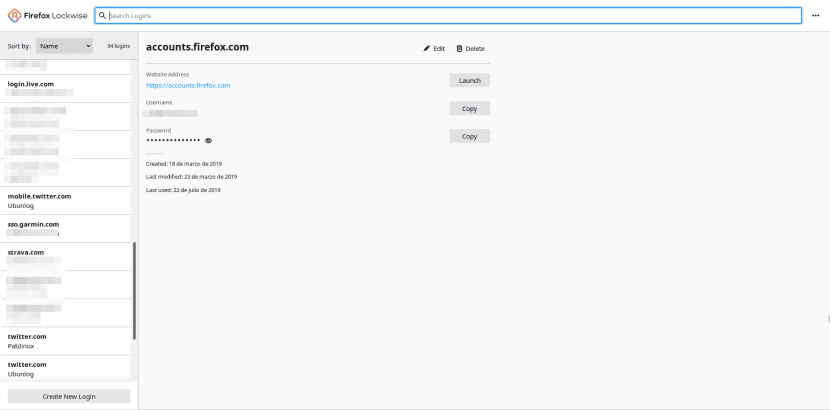
It has long been the feeling that Mozilla has declared war on anything that could compromise the privacy of its users. In past versions of your browser included protection against fingerprinting and crypto mining, but the company still wants to go further and in Firefox 70 They will include a new page from which we will see how the browser is protecting us, more specifically how many blocks it has made since we are using it.
The first time the page in question appeared it did so in Firefox 69 beta, where it is still available, but an example still image. The new information page is available if we write "about: protections" in the address bar (URL), at which point we will see something like what appears at the top of this article under the name of "Privacy Protections." At the time of writing, all information is in English, but it will more than likely be available in Spanish when Firefox 70 is officially released.
Privacy Protections, new security information for Firefox 70
The first thing we will see if we enter the new page will be how many crashes have been made by Firefox between social trackers, cookies, content, fingerprinting and cryptocurrency. If we click on each of the types of blockers, at the bottom of the graph we will see information about what each one does. Below the explanation is the total number of blocks, which in my case right now is 46. The vast majority of blocks will be from content trackers.

Other Mozilla services such as Monitor (disabled at this time) and also appear on the same page of what in Spanish should be "Privacy Protections". LockwiseThe first being a service in which we can check if our data has been compromised and the second being the company's password manager. From the same page we can access a Lockwise that is now installed and activated by default, so we are not obliged to install its extension. At the bottom of the page we can see how many passwords we have stored, how many would have a security problem and how many devices we have connected to Firefox Sync.
We can access Lockwise from the same page "about: protections" by clicking on what now says "Open in Firefox", from the hamburger / logins and passwords or on the page "about: logins". We will see something like the following: 
This page will allow us to manage our credentials (web pages, users and passwords), as well as add new ones. If you've used other password managers, what you'll see on the new Firefox page should be familiar.
Another novelty that does not change much but can confuse us is that the "i" to the left of the address bar (URL) has disappeared. Now, all the information and options that we accessed from the "i" icon are available from the shield that the browser shows every time it protects us from something. And it is that now the shield always appears, in black if it does not act and in purple with an animation if it is working.
How can I try all this right now
Testing what's to come in Firefox long before its official arrival is very simple. We just have to download the Nightly version of Firefox, something we can do from this link. It is available for Linux, macOS and Windows and we only have to choose a platform, a language and an architecture and download its binaries. The downloaded file will be a tar.bz2 that will have to be unzipped in order to run. It will create a folder called "firefox" and in order to run Firefox 70 (or whatever version it is in the future) we have to double-click on the "firefox-bin" inside. From Firefox 67 it is possible to run several completely independent versions of Firefox, so we can have Firefox 68 (the stable one), Firefox 69 (in beta phase) and Firefox 70 (nightly) on the same computer, as is my case, and all without compromising the other instances of Firefox.